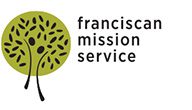One Bread, One Body

Editor’s note: Missioner Janice Smullen shares her reflections on the Eucharist and how the sharing of Holy Communion has brought her to a deeper understanding of community.
Much to my surprise, one of the questions that I have found myself pondering throughout my time on mission has been the meaning and mystery of the Eucharist. In years past, when I taught preschool or Holy Communion classes, I described the Host as a very special “vitamin” that would strengthen our connection and understanding of God. Now, as an older adult, I think I have expanded my understanding. Sometimes, being on mission in a country with a very low Catholic population, I have questioned the separation that our Catholic understanding of the Eucharist may seem to bring. Reading The Mass – a Guided Tour by Thomas Richstatter and Wild Man to Wise Man by Richard Rohr and attending a Cursillo retreat weekend and experiencing all of life’s journey of joys and difficulties have taught me to look deeper into this gift of Jesus to me.
I have been guilty of routinely going to Communion without much thought or preparation. I have felt firsthand the confusion of many of Jesus’ disciples who left his fold because His Eucharistic directive seemed too unusual and demanding or crazy. I think this idea still fuels the fires of separation between denominations: Is it Real Presence or just symbolic? Richstatter’s book gave me some new perspective on the meaning of the Catholic process. For example, the paten and the cup are first raised separately. I had not noticed that before. His body would be broken. His blood would be poured. The suffering would be intense and it would seem to be the end. Christ turns to his Father in prayer.
The Eucharistic prayers of the priest and community ask this “end” to be transformed from sacrifice into the attainment of a joyful union with God.All of this is prayed together by the priest and community to the Father. I am simultaneously at the Last Supper and present at this meal today.
That is my very small theological understanding of Eucharist but I also feel how it is tied to my everyday life. “You are what you eat” seems to apply here! I am receiving Christ – how empowering is that and this will nourish me to be like Christ. The “sharing of a meal” brings memories of every happy Thanksgiving or birthday celebration I have had with friends and family. Those are the same friends and family that help me through difficult times, just as I should be helping, in good times and bad, to all who are worshipping. The mystery and timelessness of Holy Communion transcends into my daily life as patience, hope, and conviction, even through times of suffering.
This mystical idea of the Eucharist translates into my life here on Earth. Everyone can identify with suffering. The Paschal Mystery shows us what to do with that suffering. The emotions present in that first death and rising can be experienced by everyone: fear by Mary and the disciples; depression and abandonment by Jesus in the garden; the physical pains of Christ’s Passion on the cross; and, finally, for all of us, the joy of receiving hope and answers as we progress on life’s journey and experience times of resurrection.
I experience suffering and resurrection and I often see suffering and resurrection in others. This fact brings us together and makes one bread, one body, that is food for ALL; nourishing us to become wholesome food for all.
Reflection question: What is an element of your faith that has caused you questions and confusions but ultimately brought you deeper in understanding of your own faith life?
Tagged in:

